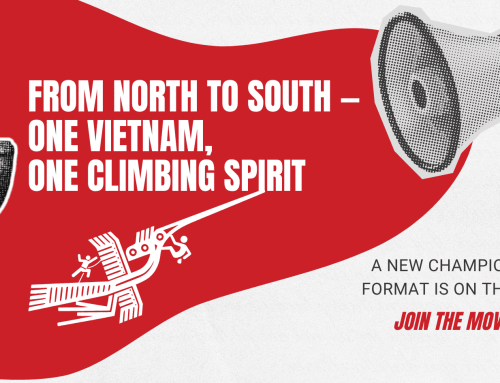Even if you’ve yet to find yourself on a sheer rock face, you’ve probably heard someone talk about doing a “5-point-something” climb when describing a route they’ve attempted or mastered. What they’re describing is the difficulty level of the climb and the rating is from the Yosemite Decimal System (YDS). Though it was born in the outdoors, the system is also used to rate route difficulty in climbing gyms.
Route Climbing
Much like the difference between U.S. and metric measuring systems, other countries’ climbing systems are distinct: Germany, England, France and Australia all have their own gradings. Below you will find a table that compares the different climbing grades across the five most popular systems, that are:
French – The French system is an internationally recognised system for grading sport climbs and is therefore used on bolted routes within the UK.
UIAA – This system is used in Germany, in other areas of Eastern Europe and in Italy for the classic routes.
United States – Yosemite Decimal System(YDS) is a grading system commonly found in the United States, starts with a 5.something. Grades 1 to 4 refer to walks of increasing difficulty, by the time you reach 5 you are assumed to be scrambling over rocks which equates to about 5.0.
Sub-Grade (Yosemite Decimal System)
The sub-grade ranges from 1 to a theoretically infinite number (today the highest number is 15). The number is increased when a “harder” climb is developed. For a brief explanation of traditional climbing grades follow this link.
Great Britain – The UK system is made of two sub-grades, an adjective grade and a technical grade. The adjective grade describes the overall difficulty of the climb taking into consideration how strenuous the route is, the amount of exposure and the availability of protection. The adjective grades are as follows: Moderate (M), Very Difficult (VD), Hard Very Difficult HVD), Mild Severe (MS), Severe (S), Hard Severe (HS), Mild Very Severe (MVS), Very Severe (VS), Hard Very Severe (HVS) and Extremely Severe. The Extremely Severe grade is also broken down into 10 further sub grades from E1 to E10. The numerical technical grading describes the hardest (crux) move on the climb. For a brief explanation of UK traditional climbing grades follow this link.
Australian – The system used in Australia and New Zealand is perhaps the most logical of all. There are no letters secondary grades, just a single number which gets bigger as the routes get harder.



Bouldering Ratings
Much like the climbing world, bouldering has evolved multiple grading systems. The standard used most widely today is the V Scale, named after John “Vermin” Sherman, who collaborated with his buddies to grade routes in the legendary Hueco Tanks bouldering area in Texas.If you go bouldering in Europe, you’ll see ratings in the Font Scale. That system originated in Fontainebleau, a renowned French bouldering region.
The V Scale goes from V0 (easiest) through V16 (hardest). It also includes an introductory level of VB for beginner bouldering problems. Because the scale is open ended, it’s conceivable that numbers higher than 16 could get added later. Sometimes you see a + or – appended to a value to distinguish difficulty level within the same level.




How to Use Climbing Ratings
The “crux,” or hardest part of the climb, is the basis for the rating. Some guidebooks provide further clues to difficulty by adding a + or – to a designation:
+ indicates that a route sustains its level of difficulty most of the way
– indicates that just one or two spots will be as difficult as the crux
Even though the numeric system is standardized, ratings can and do vary. A little context can help you get the most from climbing ratings:
Gradings are environmental: When you move from the gym to the crag, start at a lower level because weather and weathered hand- and footholds make things more challenging.
Gradings are regional: Gradings may be relative based on their difficulty compared to other climbs nearby. When you’re in a new area or gym, ask the locals if the ratings tend to be high or low there.
Gradings can be personal: Gradings may be based on the climbing style or body type of the climber who developed the route.
Gradings are informational: Gradings are guidelines, not Gospel. Don’t obsess about a number. Use the grading system to pick routes that are inspiring, challenging and fit the level of climbing you prefer.
Gradings are situational: Pay more attention to the climbers at the crag than the posers at the pub.
Words by Steve Shipside.



